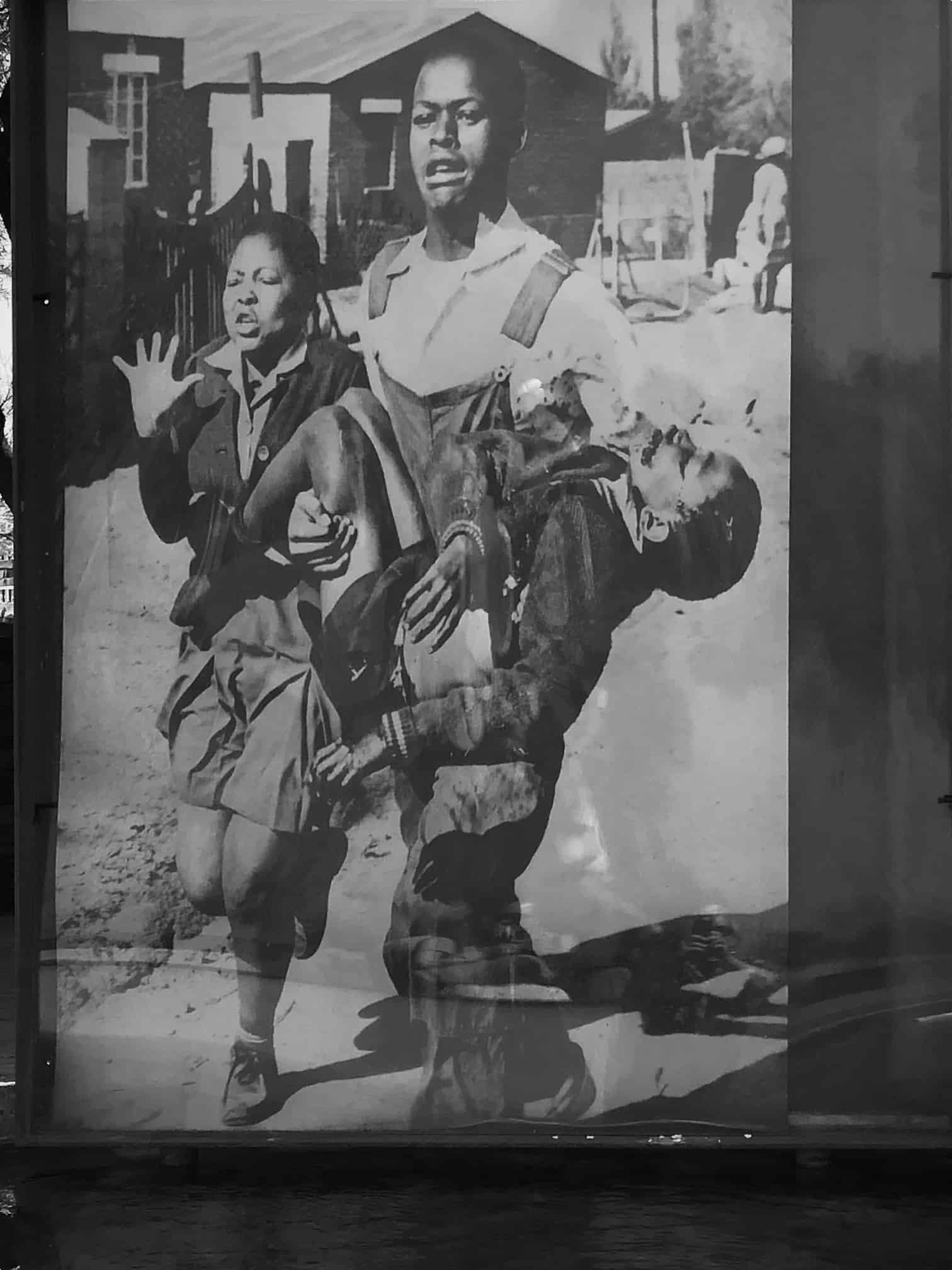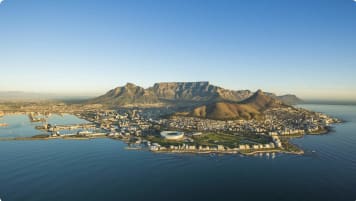A history of South Africa for senior travellers
Escorted small group tour of South Africa provides a platform for the senior traveller interested in continuing to learn, whether as a couple or solo traveller about this fascinating country full of history and incredible people and amazing wildlife and stunning scenery. This article provides the background information for senior and mature travellers to begin their small group tour to South Africa.
21 May 20 · 29 mins read
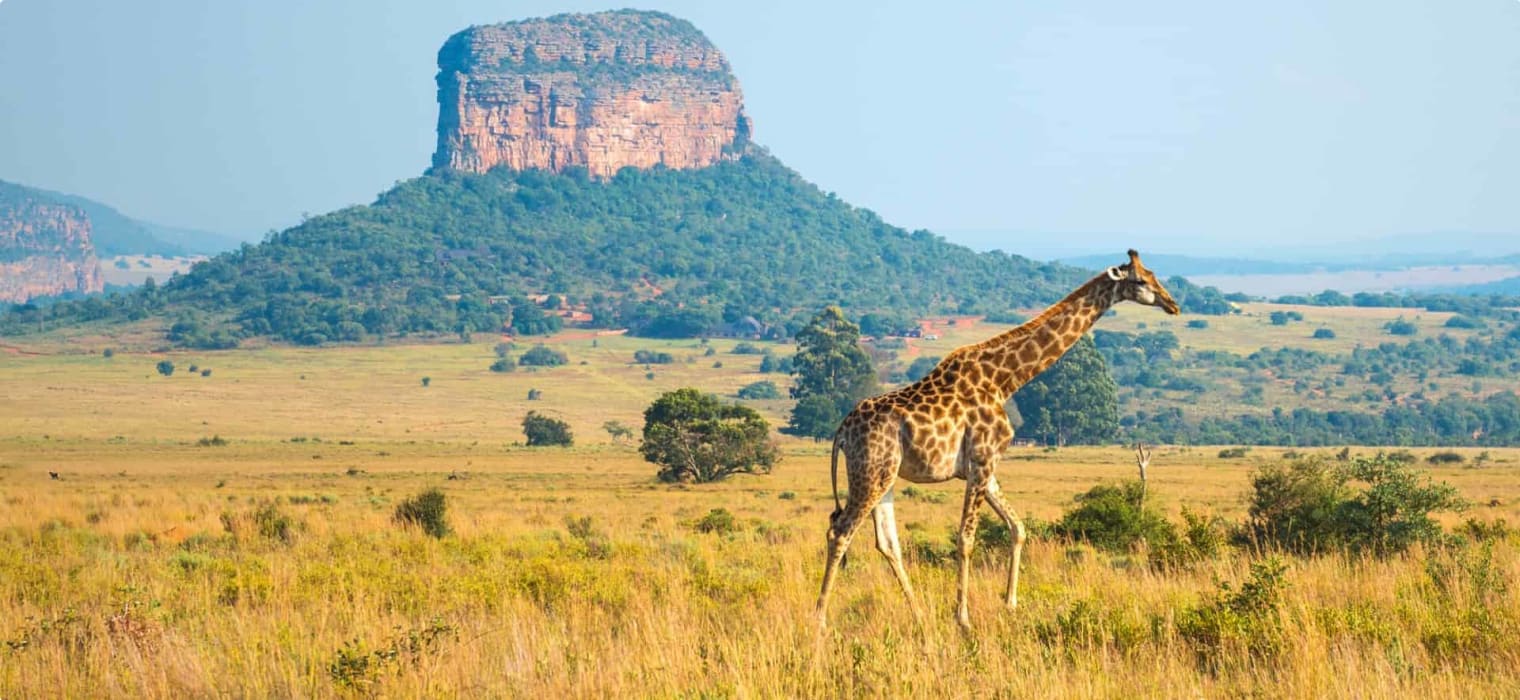
A history of South Africa for senior travellers.
Since 1983 Odyssey Traveller has been offering small group tours to mature and senior travellers to almost 200 destinations around the world. Our small group escorted tours of South Africa remain a popular destination for couples and solo travellers seeking a South Africa Safari. This long article seeks to set the scene for our small group escorted tours of South Africa for you and your tour guide. To understand and appreciate South Africa, your South Africa tour should get beyond a regular escorted tour of a wildlife safari in a national park with a nod to Robben Island, Johannesburg, the cape winelands and a guided tour of the garden route along the Western Cape. For Odyssey Traveller our small group escorted tours of South Africa for the senior acknowledges the importance of these places and the stunning scenery, but seeks to take the traveller on a South Africa tour that also provides an understanding of the historical context and important contribution key events have had in shaping the nation that is reflected in your South Africa tour experience.
Situated at the southernmost tip of the African continent, the Republic of South Africa covers an area of 1,233,404 square kilometres, nearly five times the size of the United Kingdom. It is bordered by Namibia, Botswana, Zimbabwe, Mozambique and Swaziland, and contains the landlocked country of Lesotho within its borders. It stretches almost 2,000 kilometres from the Limpopo River in the north to Cape Agulhas, the southernmost tip of Africa, and approximately 1,500 kilometres from Port Nolloth in the west to Durban on the Indian Ocean in the east. The scenery is spectacular and diverse, varying from mountains, rivers, grassy plains, lakes, lagoons and endless coastlines to sun-scorched semi-deserts. South Africa is divided into nine provinces – Gauteng, Mpumalanga, Northern Province, North-West, Kwa-Zulu Natal, Eastern Cape, Western Cape and Northern Cape.
The History of South Africa is a long and troubled one. These small group escorted tours of South Africa hope to bring an understanding of this history as they visit many of the places associated with important people and events that had an impact on the development of modern South Africa.
Beginnings
It is thought by palaeontologists that humans evolved in Africa and evidence from tools and bone fragments suggests that modern humans lived and hunted in Southern Africa 110,000 years ago. With your tour guide on these small group escorted tours of South Africa up on the high veld country an hour northwest of Johannesburg, travellers cross into what is called the Cradle of Humankind. This 180 square miles of scattered acacia and stinkwood trees is a UNESCO World Heritage site, mostly hidden underground in a fossil-rich labyrinth of caves and sinkholes, and where the fossil bones of an ancient species called Homo naledi was found. South Africa’s initial claim to be humanity’s home goes back almost a hundred years. In 1924, anatomist Raymond Dart found a skull of a juvenile primate among a box of fossil-bearing rocks sent to him by the manager of a quarry at Taung, on the edge of the Kalahari Desert. Despite a tiny brain and other apelike features, the position of the opening at the base of the skull convinced Dart that the “Taung child” had walked upright like a human. He described the find as Australopithecus Africanus (“southern ape of Africa”).
and where the fossil bones of an ancient species called Homo naledi was found. South Africa’s initial claim to be humanity’s home goes back almost a hundred years. In 1924, anatomist Raymond Dart found a skull of a juvenile primate among a box of fossil-bearing rocks sent to him by the manager of a quarry at Taung, on the edge of the Kalahari Desert. Despite a tiny brain and other apelike features, the position of the opening at the base of the skull convinced Dart that the “Taung child” had walked upright like a human. He described the find as Australopithecus Africanus (“southern ape of Africa”).
For many years, the Taung child remained an isolated oddity that few scientists took seriously. An exception was Scottish doctor and palaeontologist Robert Broom, who in 1936 discovered the first fragments of an adult australopithecine in Sterkfontein, today’s most visited cave in the Cradle of Humankind. Broom later found a nearly complete pelvis there, confirming that australopithecines were upright walkers. Broom planted the South African fossils firmly on the scientific map in a 1946 study, concluding that these ancestors were “nearly men, and were certainly closely allied to mankind.”
At the time of Broom’s study, Louis Leakey, the Kenyan-born son of English missionaries, was struggling to vindicate his long-held belief that humanity was in fact rooted in his native East Africa. His quest finally bore fruit in 1959, when he and his wife, Mary, discovered an australopithecine skull in Tanzania’s Olduvai Gorge. A year later, the Leakeys found fossils of a more advanced species, seemingly a bridge from the australopithecines to us. They dubbed it Homo habilis, or “handy man,” after a scatter of stone tools close by.
Pre-European
By 100,000BC the San people had settle in southern Africa. From about 50,000BC groups of San people migrated out Southern Africa eventually giving rise (apparently) to modern humankind in the rest of the world. The Aboriginal community reached Australia 50,000-60,000 years ago possibly originating from Southern Africa. From about 500AD Bantu speaking people from Central and Eastern Africa had migrated into South Africa. From 1500–1650 the arid western half of southern Africa was dominated by Khoi herdsmen and by San hunters/gatherers who in lean times became clients of the Khoi. The San lived in small nomadic bands while Khoi lived in larger, semi-nomadic, and differentiated groups. At the Cape, Khoi traded cattle to occasional European ships. At the east-west divide, marked by grazing land that was marginal for agriculture, there were economic relationships between Khoi herders and Bantu cattle-keeping farmers. The latter (Nguni along the coast and Sotho/Tswana in the interior) lived in late-iron age mixed farming communities based on grain and livestock. These communities were formed into chiefdoms but were not highly centralised; the basic unit was the homestead, linked to the chiefdom through patrilineage and the clan. By the time European explorers reached the Cape of Good Hope, San and then Khoi, nomadic hunters, gatherers and pastoralists had lived in southern Africa for around 40,000 years. South Africa is a rich store house of prehistoric art and artefacts, some of it dating back 10,000 years.
Early Europeans
The Portuguese explorer, Vasco da Gama, opened the Cape of Good Hope spice route to the East Indies in 1498 and, by the late 17th century, Dutch traders, under their leader Van Riebeeck, had established a permanent settlement on the site of present-day Cape Town. The Dutch East India Company established a settlement at Cape Town as refreshment station for ships in trade between Europe and Asia. Meat was procured from the Khoi and vegetables grown in the company garden. In 1667 Indians and Malaysians began to arrive at the Cape, being brought as slaves or indentured servants. In 1688 Two hundred Huguenot refugees from France arrived at the Cape and strengthened the Dutch settlement and these waves of immigrants had lasting effects on South African history.
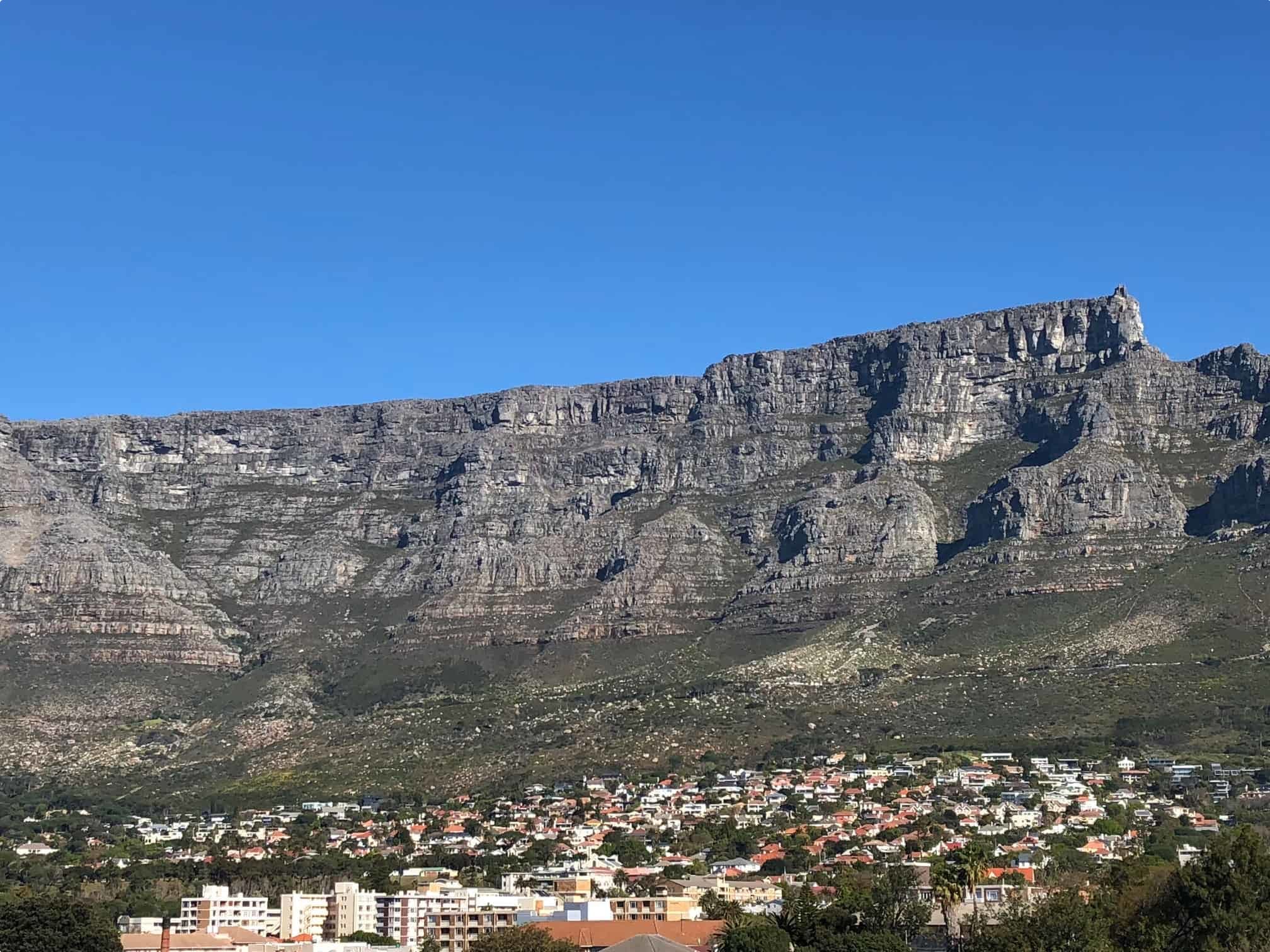
Our small group escorted tours of South Africa visit modern Cape Town. We enjoy a group tour with a tour guide to the Castle of Good Hope, built between 1666 and 1679 by the Dutch East India Company (VOC), consisting of the Company Gardens, a large public park and botanical garden built by the VOC to grow fruit and vegetables to service the ships visiting Cape Town. During our trip we can see the influence of the Dutch settlers can still be seen in beautiful Cape Dutch houses 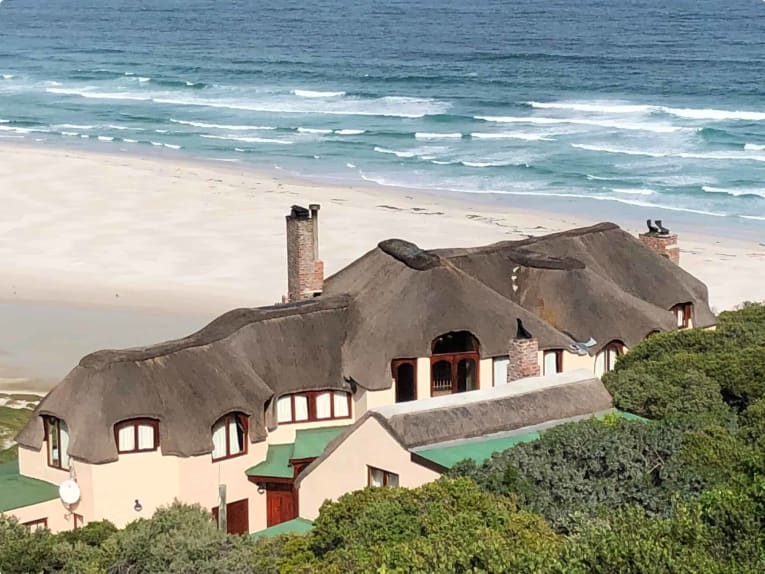 and public buildings. Another charming place on a itinerary focussed on the history is to visit Bo-Kaap, a former township, situated on the slopes of Signal Hill above the city centre. It was the historical centre of Cape Malay culture in Cape Town. The Nurul Islam Mosque, established in 1844, is located in the area. Bo-Kaap is known for its brightly coloured homes and cobble stoned streets.
and public buildings. Another charming place on a itinerary focussed on the history is to visit Bo-Kaap, a former township, situated on the slopes of Signal Hill above the city centre. It was the historical centre of Cape Malay culture in Cape Town. The Nurul Islam Mosque, established in 1844, is located in the area. Bo-Kaap is known for its brightly coloured homes and cobble stoned streets.
The abolition of the slave trade throughout the British Empire caused a serious labour shortage in the Cape. 1809 The Khoikhoi were placed under colonial law. 1811–12 The British drove 20,000 Xhosa out of Zuurveld to a line east of the Fish River on the Eastern Cape frontier, opening the area for white settlement.
During this period and since Khoi labour was not forthcoming, the company imported slaves from Asia and other parts of Africa (especially Madagascar). The settlement slowly expanded as Europeans engaged in extensive pastoralism and hunting with Khoi and slave labourers. Burghers freed from company service at Cape Town came into conflict with Khoi on Cape Peninsula, leading to series of wars between the company and Khoi. Bantu speakers in present-day South Africa also began to adopt maize, which has higher yields but is less drought-resistant than sorghum. The century was generally dry in South Africa and concluded with a serious drought and famine. Preceding the drought, however, there was considerable population growth based on the early adoption of maize in the northern Nguni areas and a proliferation of chiefdoms. Sotho-Tswana peoples began to form large chiefdoms in southern and western Transvaal and in Botswana, living in large central settlements and ruled by a chief with religious and political authority advised by a council. Cape Town became a trading port for an extensive pastoralist economy. Its population increased from slave importations and immigration. Gradually the European colonisation of the hinterland, clashed with the indigenous people. By the early 1700s the white South Africans were pushing north and east, coming into conflict with the Xhosa who were moving west. These white South Africans were heavily outnumbered but, armed with superior weapons, were able to push the Xhosa from their lands.
The 19th Century
The British arrived in Cape Colony in 1795, ostensibly at the request of William of Orange who had been exiled from Holland by the French, and by 1800 there were 20,000 free burghers and 25,000 slaves. The abolition of the slave trade throughout the British Empire caused a serious labour shortage in the Cape. 1809 The Khoikhoi were placed under colonial law. 1811–12 The British drove 20,000 Xhosa out of Zuurveld to a line east of the Fish River on the Eastern Cape frontier, opening the area for white settlement. Under the Treaty of Paris, May 13 1814, the British secured definitive possession of the Cape. In 1817 the chief of the Zulu nation was killed and his protege, Shaka, was quickly installed as chief of the small Zulu chiefdom.
In the interior of the country the Zulu chief, Shaka Zulu, was leading a campaign to build a powerful empire of his own which inevitably came into conflict with the Dutch and the British. From 1835-46 the Dutch-speaking colonists trekked up into the interior of southern Africa in search of land where they could establish their own homeland, independent of British rule. The determination and courage of these pioneers has become the single most important element in the folk memory of Afrikaaner Nationalism. However, far from being the peaceful and God-fearing process which many would like to believe it was, the Great Trek caused a tremendous upheaval in the interior for at least half a century as the Boers fought against the indigenous people for pastoral land, and in due course they founded their two republics: Transvaal and the Orange Free State. In 1838 Zulu chief Dingane had one group of Voortrekkers killed but in the subsequent battle of Blood River, 12,500 Zulu were defeated by a 468 strong commando group, causing the “river to run red with blood”.
Just south of Pretoria, travellers independent of a tour or on a group tour can visit the Voortrekker Monument built in honour of the Voortrekkers (Pioneers) who left the Cape Colony in their thousands between 1835 and 1854. The monument was designed to “stand a thousand years to describe the history and meaning of the Great Trek to the descendants of the Trekkers.”
On a visit to Cape Town in 1836, Charles Darwin wrote to his sister, “This is a pretty and singular town; it lies at the foot of an enormous wall, which reaches into the clouds, and makes a most imposing barrier. Cape Town is a great inn, on the great highway to the east.” The British, of course, had their own strategic and economic reasons for annexing the region. The colony’s expansion pushed the Khoisan from the western interior, and the continued push into the hinterland had a devastating effect on the Xhosa. Tragically the disunited tribes were advised by their witch doctors that they could win if they killed all their cattle. The result was that 40,000 Xhosa died of starvation and in 1877, Cape Colony annexed all remaining Xhosa lands.
Further Divisions
A great economic boost to the region was the discovery of diamonds near present-day Kimberley in 1868 – 1869, followed by the discovery of gold on the Witwatersrand, where Johannesburg was to be established, in 1886. These finds had enormous political repercussions. From 1880–81 Boers in the Transvaal revolted against the British in what came to be known as the First Boer War or first South African War. In December 1881 Boer leaders, including Kruger, Joubert, and Pretorius, declared the South African Republic. The British recognized the republic on April 5 in the Treaty of Pretoria. In 1880 The Barnato Diamond Mining Company was founded by Barney Barnato, and the De Beers Mining Corporation was founded by Cecil Rhodes and Alfred Beit. 1870–1904 Mineral revolution led to white immigration, increasing the number of white South African settlers from 225,000 to 1 million. In 1871 Kimberley soon became the centre of the diamond industry. Cecil Rhodes’ Consolidated Gold Mines soon controlled a large share of the gold business and in 1890 Cecil Rhodes became prime minister of the Cape Colony in 1895. In 1896 Leander Starr Jameson led an unsuccessful raid on Johannesburg, intended to spark an uprising of Uitlander miners as a pretext for British intervention in South African Republic. Cecil Rhodes, implicated in the Jameson Raid, was forced to resign as prime minister during 1896.
In 1898 Kruger was re-elected president of the South African Republic and brought a hardening of Afrikaaner attitudes toward immigrants. Uitlander agitation against the Kruger regime increased. Milner was favourably disposed toward Uitlander grievances. In 1899, 20,000 Uitlanders sent a petition to Queen Victoria, recounting their grievances. The ongoing clashes between the Boers and the British culminated in the second Boer War of 1899–1902.
The Second Boer War
‘The South African War (Anglo-Boer War) remains the most terrible and destructive modern armed conflict in South Africa’s history. It was an event that in many ways shaped the history of 20th Century South Africa. The end of the war marked the end of the long process of British conquest of South African societies, both Black and White’. – Gilliomee and Mbenga (2007).
A number of interrelated factors led to the Second Boer War. These include the conflicting political ideologies of imperialism and republicanism, the discovery of gold on the Witwatersrand, tension between political leaders, the Jameson Raid and the Uitlander franchise.
Gold had been mined since the early 1870s but was discovered on the Witwatersrand, in the Transvaal, in 1886. Thousands of white and black South Africans were employed on the mines by 1890. South Africa became the single biggest gold producer in the world and this meant great growth for the independent Boer governments. The Transvaal now also became more prominent in international finance because the importance of gold as an international monetary system. Britain was the centre of industry and trade in the world at the time and needed a steady supply of gold to maintain this position.
Neighbouring independent states like the Orange Free State and British colonies like Natal could also gain from the riches and investment brought to the country. The Cape Colony was no longer the leading economic state in the country anymore and a Boer republic took its place.
Prospectors streamed to South Africa from all over the world, and especially from Europe. The Transvaalers saw these foreigners, or Uitlanders, as a threat to their independence. In order to maintain its control of gold mining and the growth of the Uitlanders as they called them immigrant population, the Transvaal government restricted the voting rights of Uitlanders. Only foreigners who had been in the country for 14 years or more could vote. It was called the Uitlander franchise and didn’t really bother most Uitlanders, who had come to South Africa to make their fortunes, but it did cause strain between the Transvaal and British governments.
There were various political leaders with opposing views in power in different parts of South Africa during the 1890s. Paul Kruger was president of the Transvaal or South African Republic (SAR) and Cecil John Rhodes became the premier of the Cape Colony in 1890. Rhodes was from Britain and had made his fortune in South Africa by mining diamonds. He was also a supporter of the British imperial plan to unite South Africa under British rule. Kruger was a supporter of Boer independence and the two leaders were in direct conflict with each other.
By 1895 Great Britain was getting more confident about taking action in South Africa. Joseph Chamberlain was appointed Colonial Secretary. He joined forces with Rhodes to try to develop and promote the British Empire in South Africa. By 1895, the Cape had finished building a railway line to Johannesburg and tried to get as much of the Transvaal’s railway traffic by reducing its rates. It was aware that the Transvaal’s Delagoa Bay line was almost complete. The Transvaal government increased the rates on the part of the railway that ran through the Transvaal once it had crossed the Vaal River. In answer to this goods, were taken to the Vaal River by train, and then taken further by wagon to avoid paying the higher prices in the Transvaal. Kruger reacted by blocking access to the Transvaal, closing the drifts on the Transvaal side. The British government demanded that Kruger open the drifts and used the situation to involve itself directly in Transvaal affairs. Rhodes planned an uprising of Uitlanders in Johannesburg. The uprising was timed to coincide with an invasion of the Transvaal from Bechuanaland (present day Botswana), by Dr Leander Starr Jameson. Rhodes wanted to take over the government of the Transvaal and turn it into a British colony that would join all the other colonies in a federation. Chamberlain helped plan the Jameson Raid.
The Jameson Raid which began on 29th December 1895, was a total failure. Jameson waited on the border, but the Uitlander leaders in Johannesburg argued among themselves about the kind of government to be put into place after the invasion. Many of the Uitlanders had no interest in violent uprising, but preferred to celebrate the New Year. Rhodes decided to stop the raid, but it was too late because Jameson and his party had already crossed into the Transvaal.
Jameson’s troops tried to cut communication lines to Pretoria, but cut the wrong lines. This meant that the Transvaal government knew the raiders were on their way before they reached Johannesburg. On 2 January 1896 Jameson had to surrender at Doornkop near Krugersdorp. The prisoners were handed over to their own government and the Uitlander leaders who had been part of the plot were put to trial in Johannesburg. Some of them were condemned to death, but the sentences were later reduced to large fines.
Rhodes was forced to resign as the premier of the Cape Colony and the political problems between Afrikaans and English-speaking people became worse than ever in the colony. The Orange Free State co-operated more closely with the Transvaal. Transvaal residents felt that they were being threatened and Uitlanders were treated with more suspicion than ever before.
The Uitlanders were not only from Great Britain, but came from all over the world to make money on the goldfields in the Transvaal. Some of them were not interested in the political situation in the republic and were not concerned about the fact that they could not vote. Some Uitlanders felt that they contributed to the exploitation of the riches in the republic and had the right to a say in the way the country was being run.
The Transvaal government realised that this could be a threat to the republic’s independence, but also knew that it could not ignore the Uitlanders’ demands. The foreigners could apply for citizenship or naturalisation after 5 years of living in the Transvaal. A Second Volksraad was created in 1890 and new laws were made. Uitlanders who had been naturalised for two years could now vote. The Second Volksraad only had say in local matters in Johannesburg and on the mines; any bills it put forward could only become laws if the First Volksraad agreed. Only Uitlanders who had been in the country for a full 14 years or longer could vote for the first Volksraad.
Now Uitlanders had a say in political matters, but the First Volksraad still ran the country. Very few Uitlanders used their right to vote, but the Second Volksraad took its responsibilities seriously. After the Jameson Raid Chamberlain wanted to win back some of the respect he had lost because of the raid’s failure. He was more determined to make the South African union a reality and decided to use diplomatic power to do so. He invited Kruger to London for talks about the Uitlander Franchise, but the president would not discuss his country’s internal affairs. He felt that this would create the impression that the SAR could not take care of its own politics independently.
Next Chamberlain called a meeting in London to try to involve Britain directly in Transvaal affairs. His interference caused even more tension between the two countries. The Second Boer War (11 October 1899 – 31 May 1902) was fought between the British Empire and two independent Boer states, the South African Republic (Republic of Transvaal) and the Orange Free State, over the Empire’s influence in South Africa.
At the outset, Boers had the military advantage of numbers and knowledge of terrain. Britain had only 25,000 men available. By February 1900, the tide of battle favoured British forces. By November, the Boers turned to guerrilla tactics, frustrating British army strategy. In January 1901, General Kitchener used a scorched earth policy to counter Boer guerrillas. Some 120,000 women and children were confined in concentration camps (supposedly the first use of such a tactic against a civilian population, where poor sanitation and malnutrition contributed to high mortality (around 20,000 died). At the end of the war, the British had 300,000 troops in South Africa, many from the British Empire colonies of India, Bechuanaland (later Botswana), Ceylon, Rhodesia, Australia, Canada and New Zealand, against 60,000– 70,000 Boers. By the Treaty of Vereeniging (May 31, 1901) the Boers accepted British sovereignty but were promised representative government. The British promised £3 million to enable the Boers to rebuild their farms.
The Twentieth Century
The Boers’ defeat was followed eight years later by the formation of the Union of South Africa in 1910. In 1925, Afrikaans was recognized as an official language of South Africa, on a par with English and Dutch. From 1925–29 a wave of rural radicalism in eastern South Africa was marked by the rise of the ICU and other radical or millenarian movements. 1926–27 The African National Congress adopted a more radical line under the leadership of J. T. Gumede, influenced by the example of the USSR and by the Comintern’s call for a black republic in South Africa. In 1929 The Riotous Assemblies Act gave the government power to deport those promoting “racial hostility”; the act was a tool for clamping down on radical movements.
The word apartheid was first used in this period. From 1929–32 severe depression caused the collapse of agricultural prices, leading to government institution of price supports and other aid to white farmers, but not black African farmers. In 1930 the ANC returned to a moderate stance under the leadership of Pixley Seme. In 1931 the Revision of South Africa’s Urban Areas Act further restricted Africans’ rights to residence in cities and towns. In 1935 in emulation of Nazi Brown Shirts, Grey Shirts emerged in South Africa and an All-African Convention of black organizations met in Bloemfontein to oppose Native Bills, especially the withdrawal of the Cape franchise. In 1936, the Passage of Natives Representation Act removed the Cape African franchise and set up the advisory Natives Representative Council (NRC); simultaneous passage of the Natives Trust and Land Act added land to native reserves and required six months’ service of African tenants on white-owned land. In 1938 large Electoral gains were made by the Purified Nationalist Party. The Centennial of the Great Trek was used to galvanise Afrikaaner nationalism.
Jan Smuts served as Prime Minister from 1919-1924 then from 1939 till 1948. He is significant as although he had initially espoused racial segregation and opposed the enfranchisement of black Africans his views changed as he realised that complete segregation was impossible. However, he lost the 1948 election to hard-line nationalists who favoured institutionalised apartheid. This was the beginning of what is known as the apartheid regime as Black Africans were allocated “Homelands” that had virtually no infrastructure and were incapable of producing sufficient food for the population.
The Population Registration Act of 1950 required classification of all South Africans on racial lines, (white, coloured, Asian and black), especially for the purpose of dividing white and mixed-race (coloured) populations, but more generally as the basis of strategy of Grand Apartheid, involving rigid political, territorial, and economic segregation by race in order to entrench white domination and Afrikaner nationalist power.
Black resistance developed in the form of strikes, acts of public disobedience and protest marches, and many leaders, including Nelson Mandela, were Imprisoned on Robben Island, a black name in African history. In 1961 South Africa became a Republic, withdrawing from the British Commonwealth. As the last European colonial powers left Africa and socialist states formed on South Africa’s northern borders, the National Party regime responded by participating in lengthy wars in Angola, Namibia and Mozambique.
Within South Africa’s borders, violent Government response to black protests served only to strengthen the growing liberation movement. The United Nations imposed economic and political sanctions that gradually took their toll. There was no competitive sport between South Africa and their usual competitors. Facing much world condemnation, finally under the presidency of F.W. de Klerk in the early 1990s most apartheid legislation was lifted, many political prisoners were released and negotiations began to form a non-racial government.
Democratic elections in 1994 resulted in a decisive victory for the ANC, Nelson Mandela became South Africa’s first democratically-elected president and South Africa soon re-joined the British Commonwealth. Led by Archbishop Tutu, the country tried a radical healing process – The Truth and Reconciliation Commission, South Africa (TRC), court-like body established by the new South African government in 1995 to help heal the country and bring about a reconciliation of its people by uncovering the truth about human rights violations that had occurred during the period of apartheid. Its emphasis was on gathering evidence and uncovering information—from both victims and perpetrators—and not on prosecuting individuals for past crimes, which is how the commission mainly differed from the Nuremberg trials that prosecuted Nazis after World War II. The commission released the first five volumes of its final report in 1998 and the remaining two volumes in 2002.
The country’s second democratic elections were held in June 1999. This was a stage at which Nelson Mandela had planned to retire; he did so, and was succeeded as president by his deputy, Thabo Mbeki. Mbeki was replaced for a short period by Kgalema Mothlanthi. Subsequently President Jacob Zuma was elected in 2009 and was replaced by the current President Cyril Ramaphosa in 2018.
Travellers to South Africa, including those on one of Odyssey’s small group escorted tours of South Africa, have the opportunity to visit with a tour guide the Apartheid Museum in Pretoria. This is an amazing but shattering museum showing decades of abuse. Other very special places are Malcolm Mandela’s home in Soweto, Nobel Prize winner Archbishop Tutu’s present home, the Kliptown Memorial – site of the famous Freedom Charter, almost an interim constitution and on which South Africa’s Constitution is based. A truly moving site on a tour is the Hector Pieterson Memorial which reminds us of the tragic of the shooting of 13 year old Hector Pieterson who, with other school students was peacefully protesting the enforcement of teaching in Afrikaans. He was shot during the Soweto uprising when police opened fire on the school students. A photograph by Sam Nzima of the mortally wounded Pieterson being carried by Mbuyisa Makhubo, another Soweto resident, while his sister ran next to them, was smuggled out of the country and published around the world. The anniversary of his death, 16 June, is designated Youth Day, when South Africans honour young people and bring attention to their needs.
Three Giants
Nelson Mandela.
Rolihlahla Mandela was born into the Madiba clan in the village of Mvezo, in the Eastern Cape, on 18 July 1918. His mother was Nonqaphi Nosekeni and his father was Nkosi Mphakanyiswa Gadla Mandela, principal counsellor to the Acting King of the Thembu people, Jongintaba Dalindyebo. In 1930, when he was 12 years old. Mandela had tribal credentials. In accordance with the custom of giving all schoolchildren ‘Christian’ names, Rolihlahla was named Nelson in primary school.
He completed secondary education and began studies for a Bachelor of Arts degree at the University College of Fort Hare, but did not complete the degree there as he was expelled for joining in a student protest. On his return home, the King was furious and said if he didn’t return to Fort Hare he would arrange wives for him and his cousin Justice. They ran away to Johannesburg instead, arriving there in 1941. There he worked as a mine security officer and after meeting Walter Sisulu, an estate agent, he was introduced to Lazer Sidelsky. He then did his articles through a firm of attorneys – Witkin, Eidelman and Sidelsky.
He completed his BA through the University of South Africa and went back to Fort Hare for his graduation in 1943. Meanwhile, he began studying for an LLB at the University of the Witwatersrand. By his own admission he was a poor student and left the university in 1952 without graduating. He only started studying again through the University of London after his imprisonment in 1962 but also did not complete that degree.
In 1989, while in the last months of his imprisonment, he obtained an LLB through the University of South Africa. He graduated in absentia at a ceremony in Cape Town.
Mandela, while increasingly politically involved from 1942, only joined the African National Congress in 1944 when he helped to form the ANC Youth League (ANCYL).
In 1944 he married Walter Sisulu’s cousin, Evelyn Mase, a nurse. They had two sons, Madiba Thembekile “Thembi” and Makgatho, and two daughters both called Makaziwe, the first of whom died in infancy. He and his wife divorced in 1958.
Mandela rose through the ranks of the ANCYL and through its efforts, the ANC adopted a more radical mass-based policy, the Programme of Action, in 1949.
In 1952 he was chosen as the National Volunteer-in-Chief of the Defiance Campaign with Maulvi Cachalia as his deputy. This campaign of civil disobedience against six unjust laws was a joint programme between the ANC and the South African Indian Congress. He and 19 others were charged under the Suppression of Communism Act for their part in the campaign and sentenced to nine months of hard labour, suspended for two years.
A two-year diploma in law on top of his BA allowed Mandela to practise law, and in August 1952 he and Oliver Tambo established South Africa’s first black law firm, Mandela & Tambo.
At the end of 1952 he was banned for the first time. As a restricted person he was only permitted to watch in secret as the Freedom Charter was adopted in Kliptown on 26 June 1955. Mandela was arrested in a police swoop on 5 December 1956, which led to the 1956 Treason Trial. Men and women of all races found themselves in the dock in the marathon trial that only ended when the last 28 accused, including Mandela, were acquitted on 29 March 1961. In a protest in Sharpeville against the pass laws in March 1961, Mandela and his colleagues were among thousands detained during the emergency.
During the trial Mandela married a social worker, Winnie Madikizela, on 14 June 1958. They had two daughters, Zenani and Zindziswa. The couple divorced in 1996.
Days before the end of the Treason Trial, Mandela travelled to Pietermaritzburg to speak at the All-in Africa Conference, which resolved that he should write to Prime Minister Verwoerd requesting a national convention on apartheid laws, and to warn that should he not agree there would be a national strike against South Africa becoming a republic. After he and his colleagues were acquitted in the Treason Trial, Mandela went underground and began planning a national strike for 29, 30 and 31 March. In the face of massive mobilisation of state security the strike was called off early. In June 1961 he was asked to lead the armed struggle and helped to establish Umkhonto weSizwe (Spear of the Nation), which launched on 16 December 1961 with a series of explosions.
On 11 January 1962, using the adopted name David Motsamayi, Mandela secretly left South Africa. He travelled around Africa and visited Great Britain to gain support for the armed struggle. He received military training in Morocco and Ethiopia and returned to South Africa in July 1962. He was arrested in a police roadblock outside Howick on 5 August while returning from KwaZulu-Natal, where he had briefed ANC President Chief Albert Luthuli about his trip.
He was charged with leaving the country without a permit and inciting workers to strike. He was convicted and sentenced to five years’ imprisonment, which he began serving at the Pretoria Local Prison. On 27 May 1963 he was transferred to Robben Island and returned to Pretoria on 12 June. Within a month police raided Liliesleaf, a secret hideout in Rivonia, Johannesburg, used by ANC and Communist Party activists, and several of his comrades were arrested.
On 9 October 1963 Mandela joined 10 others on trial for sabotage in what became known as the Rivonia Trial. While facing the death penalty his words to the court at the end of his famous “Speech from the Dock” on 20 April 1964 became immortalised:
“I have fought against white domination, and I have fought against black domination. I have cherished the ideal of a democratic and free society in which all persons live together in harmony and with equal opportunities. It is an ideal which I hope to live for and to achieve. But if needs be, it is an ideal for which I am prepared to die. ”
On 11 June 1964 Mandela and seven other accused, Walter Sisulu, Ahmed Kathrada, Govan Mbeki, Raymond Mhlaba, Denis Goldberg, Elias Motsoaledi and Andrew Mlangeni, were convicted and the next day were sentenced to life imprisonment. Goldberg was sent to Pretoria Prison because he was white, while the others went to Robben Island.
On 31 March 1982 Mandela was transferred to Pollsmoor Prison in Cape Town with Sisulu, Mhlaba and Mlangeni. Kathrada joined them in October. Justice Minister Kobie Coetsee visited him in hospital. Later Mandela initiated talks about an ultimate meeting between the apartheid government and the ANC.
On 12 August 1988 he was taken to hospital where he was diagnosed with tuberculosis. After more than three months in two hospitals he was transferred on 7 December 1988 to a house at Victor Verster Prison near Paarl where he spent his last 14 months of imprisonment. He was released from its gates on Sunday 11 February 1990, nine days after the unbanning of the ANC and the PAC and nearly four months after the release of his remaining Rivonia comrades. Throughout his imprisonment he had rejected at least three conditional offers of release.
Mandela immersed himself in official talks to end white minority rule and in 1991 was elected ANC leader to replace his ailing friend, Oliver Tambo. In 1993 he and President FW de Klerk jointly won the Nobel Peace Prize and on 27 April 1994 he voted for the first time in his life.
On 10 May 1994 he was inaugurated as South Africa’s first democratically elected President. On his 80th birthday in 1998 he married Graça Machel, his third wife. True to his promise, Mandela stepped down in 1999 after one term as President. Nelson Mandela never wavered in his devotion to democracy, equality and learning. Despite terrible provocation, he never answered racism with racism. His life is an inspiration to all who are oppressed and deprived; and to all who are opposed to oppression and deprivation. He died at his home in Johannesburg on 5 December 2013.
F W de Klerk
Frederik Willem de Klerk was born in 1936 the son of a leading politician. He received a law degree (with honours) from Potchefstroom University in 1958. Soon afterward he began to establish a successful law firm in Vereeniging, becoming active in civic and business affairs there. In 1972 he was elected to Parliament for the National Party. His legal talents and the respect in which he was held won him a number of key ministerial portfolios, including mines and energy affairs (1979–82), internal affairs (1982–85), and national education and planning (1984–89). He was elected leader of the House of Assembly in 1986.
After President P.W. Botha fell ill in January 1989, de Klerk was elected leader of the National Party and successfully opposed Botha’s resumption of office after his recovery. De Klerk was formally elected president by South Africa’s tricameral Parliament on September 14. He owed his political success to the power base he had built up in the Transvaal, where he had been chairman of the provincial National Party from 1982. As president, de Klerk committed himself to speeding up the reform process begun by his predecessor and to initiating talks about a new post-apartheid constitution with representatives of what were then the country’s four designated racial groups (white, black, Coloured, and Asian [Indian]).
Though faced with a strengthened right-wing opposition in Parliament (the Conservative Party), following his famous opening address to Parliament on February 2, 1990, de Klerk quickly moved to release all important political prisoners, including Nelson Mandela, and to lift the ban on the African National Congress (ANC) and the Pan-Africanist Congress of Azania. Thereafter, he frequently met with black leaders, and in 1991 his government passed legislation that repealed racially discriminatory laws affecting residence, education, public amenities, and health care in South Africa. In 1992 he called a referendum in which almost 69 percent of the country’s white voters endorsed his reform policies. That same year de Klerk undertook serious negotiations with Mandela and other black leaders over a proposed new constitution that would enfranchise the black majority and lead to all-race national elections. In the meantime, his government continued to systematically dismantle the legislative basis for the apartheid laws and racial segregation.
Under de Klerk’s leadership, the governing National Party reached agreement with the ANC in the summer of 1993 on a transition to majority rule. De Klerk led his party’s campaign in South Africa’s first all-race elections in April 1994, in which the ANC obtained a majority of seats in the new National Assembly. De Klerk subsequently joined a government of national unity formed by Mandela, the first black South African president, taking the post of second deputy president. De Klerk resigned as deputy president in 1996 and as head of the National Party in 1997, when he announced his retirement from politics.
Archbishop Desmond Tutu
Desmond Tutu, in full Desmond Mpilo Tutu, was born in October 1931 in Klerksdorp, South Africa. As a boy, Tutu wanted to become a doctor, but when his family could not afford the training he followed his father’s footsteps into teaching and instead became a schoolteacher in 1955. He resigned his post in 1957. He then attended St. Peter’s Theological College in Johannesburg and was ordained an Anglican priest in 1961. In 1962 he moved to London, where in 1966 he obtained an M.A. from King’s College London. From 1972 to 1975 he served as an associate director for the World Council of Churches. He was appointed dean of St. Mary’s Cathedral in Johannesburg in 1975, the first black person to hold that position. From 1976 to 1978 Tutu served as bishop of Lesotho.
In 1978 Tutu accepted an appointment as the general secretary of the South African Council of Churches and became a leading spokesperson for the rights of black South Africans. During the 1980s he played an unrivalled role in drawing national and international attention to the iniquities of apartheid. He emphasized nonviolent means of protest and encouraged the application of economic pressure by countries dealing with South Africa. The award of the 1984 Nobel Prize for Peace to Tutu sent a significant message to South African President P.W. Botha’s administration. In 1985, at the height of the township rebellions in South Africa, Tutu was installed as Johannesburg’s first black Anglican bishop, and in 1986 he was elected the first black archbishop of Cape Town, thus becoming the primate of South Africa’s 1.6 million-member Anglican Church. In 1988 Tutu took a position as chancellor of the University of the Western Cape in Bellville, South Africa.
During South Africa’s moves toward democracy in the early 1990s, Tutu propagated the idea of South Africa as “the Rainbow Nation,” and he continued to comment on events with varying combinations of trenchancy and humour. In 1995 South African President Nelson Mandela appointed Tutu head of the Truth and Reconciliation Commission, which investigated allegations of human rights abuses during the apartheid regime.
Tutu retired from the primacy in 1996 and became archbishop emeritus. In July 2010 he announced his intention to effectively withdraw from public life in October, though he said he would continue his work with the Elders, a group of international leaders he co-founded in 2007 for the promotion of conflict resolution and problem solving throughout the world. On October 7, 2010—his 79th birthday—he began his retirement.
South Africa Today
Health
A very pressing health issue is the prevalence of HIV and AIDS in the country. It is estimated that about 6.8 million people — translating to roughly 13% of the population — live with HIV/AIDS. It is also one of the leading causes of death in the country. The infection with HIV/Aids was exacerbated by President Zuma’s message that “the dangerous view that sleeping with virgins cures HIV or that after having sex with an HIV positive person you take a shower”. Zuma told a court during a rape trial that he had showered rather than worn a condom to ward off the risk of HIV after he had unprotected sex with an HIV positive woman. Other health issues that are becoming increasingly serious include tuberculosis and insect and tick borne diseases. In contrast to many other African countries, however, South Africa is largely free of malaria
Another pressing issue in South Africa is housing. South Africa has one of the most ambitious public housing programmes in the world. Over three million public housing units have been delivered since 1994. But challenges remain acute. Statistics South Africa reported, in the 2016 General Household Survey, that 13.5% of households were living in informal dwellings. This figure rose to 18.6% for metropolitan households. Some of this dates back to the apartheid era when ‘townships’ were established and huge settlements without amenities just grew. Through public housing many people are able to move out of the settlements, but their places are quickly taken by the waves of immigrants from neighbouring countries flocking to South Africa for better lives.
Unemployment
South Africa has a very high unemployment rate of 29.1%. The national average belies the deepness of unemployment in certain parts of the country. In some communities, it is as high as 60%. But why is this the case? One reason given is the “inability of the economy to create jobs coupled with the high-level entry requirements and the skills mismatch”. This mismatch between the needs of an increasingly technical society and the over-supply of poorly educated black Africans.
Vimal Ranchhod, professor of economics at the University of Cape Town’s School of Economics and the acting director of the Southern Africa Labour and Development Research Unit (SALDRU), also sees that South Africa’s “low-trust” society creates costly bureaucracy and labour disputes, which in turn makes employers more risk-averse to hiring less qualified candidates. Again, this has the effect of suppressing employment levels. Another reason is the perennial one that investors are wary of anything that might hamper their overall returns, including “threats to property rights, social and political instability, and perceived levels of corruption”. And if investors are unwilling to invest in South Africa, generating new employment opportunities becomes much tougher.
Education
Although the policy of segregation has now been replaced by one of integration and equality for all, the damage left behind from apartheid continues to have a large effect on the country. Its legacy continues to hinder the country’s ability to transform as effectively and quickly as the world and people of South Africa feel it should. From the 1950s up to the early 1990s the education system in South Africa mirrored its apartheid policy. The Bantu Education Act (No. 47) of 1953 widened the gaps in educational opportunities for the different racial groups in South Africa. The act stated that students of different races were not allowed to study in the same schools. It also prohibited mathematics and science from being included in the curriculum of the Black education system. The act was created in the belief that maths and sciences were not necessary in the preparation of the young Black South Africans for the low-wage labour they were being groomed to perform. At the same time it protected the privileged White minority from competition in the skilled work force. The White education system received the highest amount of funding and resources, while the funding and resources allocated to the Black education system were minimal in comparison. Black schools had inferior facilities, were often without text books, and teachers with no, or poor, professional qualifications.
Rectifying inequalities within the education system was one of the largest issues that the ANC government faced in 1994. In the early 1990s the new government set about reducing the differences which existed between the schools. Many policies were created, a new innovative curriculum was revised and there was a restructuring of the education departments. Many international specialists were brought in to advise and oversee the creation of the new system.
Since these initial policies were created, the government has acknowledged the need for teachers and principals to receive suitable qualifications in order to perform adequately as quality education providers. In order to overcome the problem of having under-qualified teachers who still teach in many schools the government has supported the development of courses for school teachers and leaders. However, educating lecturers and developing curricula to teach teachers and administrators so they can teach students takes years to develop and catch up. There is an amazing revolution occurring in this fascinating country.
Odyssey Travellers small group escorted tours of South Africa provide a platform for the senior traveller interested in continuing to learn, whether as a couple or solo traveller, about this fascinating country full of history, incredible people, amazing wildlife and stunning scenery. To bring the history to life on this small group tour to this unique part of Africa, this tour commences in Cape Town, where on this guided tour, European history commences under the backdrop of Table mountain, with its breathtaking scenery. The group tour will also visit Johannesburg, Soweto and Pretoria, all places of historic significance where history comes to life on this trip. Of course these small group escorted tours of South Africa like any Africa tour, include in the itinerary time in a national park on safari seeking out the wildlife with some truly magnificent scenery as the backdrop.
Related Tours
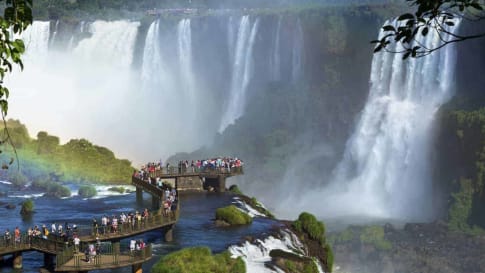
25 days
Apr, SepSouth American Small Group History and Culture Tour
Visiting Argentina, Bolivia
Experience the jewels of South America on this in-depth itinerary featuring the dramatic contrasts of this great continent on a small group tour for senior couples and solo travellers. Journey through Chile, Peru, Bolivia, Argentina and Brazil. Marvel at the ancient cultures and natural wonders of the Amazon, the snow-capped peaks of the Andes mountains, the calm waters of Lake Titicaca and the jewel coloured beaches of Rio.
From A$21,795 AUD
View Tour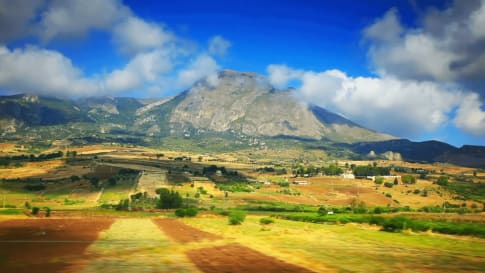
25 days
Apr, Sep, OctMediterranean Islands Small Group Tour | Malta, Sicily, Sardinia and Corsica
Visiting Corsica, Italy
For centuries Malta, Sicily, Sardinia and Corsica held the key to the Mediterranean. Unlike other European tour companies, Odyssey provides a tour leader and local guides to share detailed itineraries about the destinations on these small group journeys. This escorted tour of western Mediterranean explores the geography, history, culture and peoples of these 4 islands. Small group tour for mature couples and solo travellers. A reasonable single supplement is charged.
From A$19,750 AUD
View Tour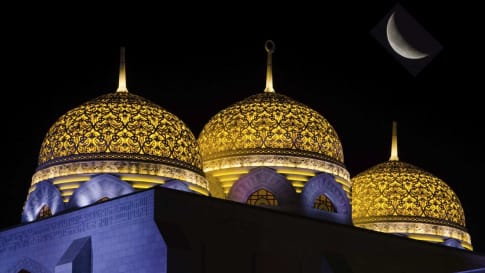
13 days
Oct, SepDiscover Oman
Visiting Oman
The Sultanate of Oman is a country of diverse natural beauties and fascinating human history. Oman boasts medieval forts and watchtowers, Bedouin villages, spectacular fjords, bustling markets, date palm plantations, and sand dunes.
From A$11,595 AUD
View Tour
24 days
Apr, SepRural France | Small Group Tour for Seniors
Visiting France
On this small group Rural France tour, we spend 24 days exploring France beyond its bustling cities, travelling off the beaten track. We will explore the pastoral and provincial splendour of French rural towns which have resisted the dual siege of the automobile and the property developer. Our small group will visit many of France’s beautiful towns where within their walls the villagers conduct their daily lives much as they have done since Napoleonic times.
From A$19,895 AUD
View Tour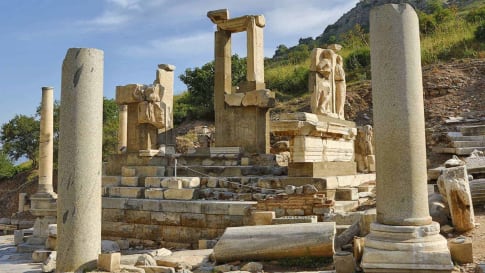
21 days
Apr, AugSmall group tour of Ancient Turkey
Visiting Turkey
As a travel company we seek to keep guests off the beaten path. Trips that are remembered for authentic experiences. Our small group journeys in Turkey are fully escorted by an experienced local guide and an Odyssey guide to give this type of experience whether at one of the many UNESCO World heritage sites explored or local bazaars. It is always about the adventure and memories that we will create.
From A$17,295 AUD
View Tour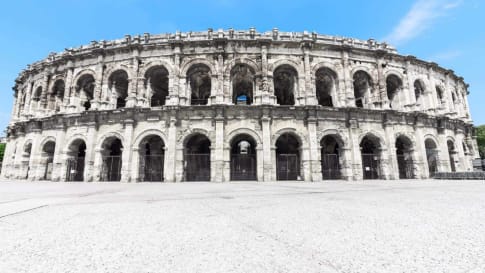
20 days
AugRomans in France small group specialist history tours for seniors
Visiting France, Switzerland
Join our small group tour to explore what remains of the Roman Gaul. France, Belgium, Luxembourg and South-west Germany were occupied by Roman Gaul some 2,000 years ago. To this region the Romans brought roads, bridges, education, cities and, perhaps, above all the Peace of Rome.
From A$17,845 AUD
View Tour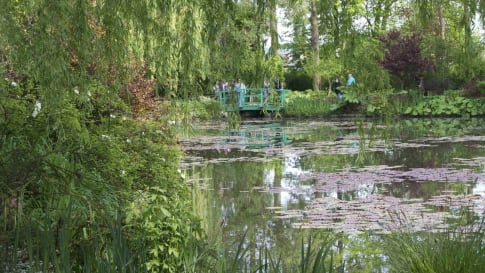
25 days
Aug, May, SepItaly and France, history of gardens small group escorted tour
Visiting France, Italy
Odyssey's small group tour explores some of the classic gardens of Italy and France that reflect changing fashions and garden designs throughout the ages. This fully escorted tour features an Odyssey Program Leader and a handful of local guides who will examine, discuss, compare and contrast the cultural and temporal similarities and diversities between the gardens of Italy and France and the historical influences on their design.
From A$18,475 AUD
View Tour
23 days
Aug, May, Apr, SepNormandy and Brittany escorted history tours for small mature grups
Visiting France
This small group tour for couples and solo travellers is centred on the North West corner of France: Normandy, where the peaceful landscape belies a turbulent past; Brittany, where a strongly separate Celtic culture is still evident; Poitou, famous for its rich farmlands and historic ports; and the Loire Valley, replete with royal châteaux.
From A$16,685 AUD
View Tour
15 days
Sep, MayLakes and Landscapes of Northern Italy | Short Small Group Tour for Seniors
Visiting Italy
Our small group tour begins in the cosmopolitan city of Milan and ventures to 2 of the region's lakes - Garda and Maggiore. Our tour uncovers a wealth of natural beauty, castles, serene waters, snow-capped mountains, and breathtaking scenery.
From A$9,685 AUD
View Tour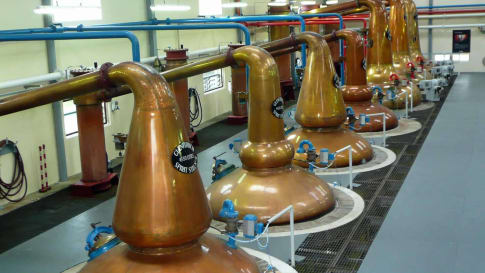
19 days
JulWhisky and Other Scottish Wonders
Visiting Scotland
A guided small group tour of Scotland is a day tour collection that includes Edinburgh, the royal mile, Edinburgh castle, and the old town a UNESCO World heritage site Experience and learn about, Kellie castle, St Andrews, Skye, Balmoral castle, Loch Lomond and Loch Ness as well touring the Scottish highlands to finish in Glasgow.
From A$18,395 AUD
View Tour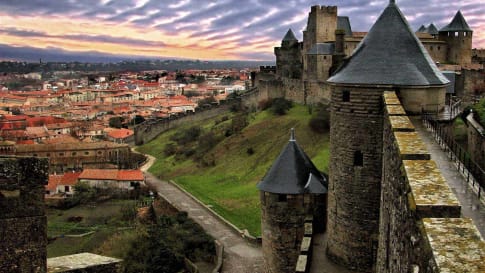
11 days
SepLa Belle France Small Group Short Tour
Visiting France
On this small group tour of France, we visit several culturally significant and picturesque regions of France, including Provence, Champagne, Burgundy. We learn about each region's history from expert local guides with a chance to experience the local culture, and taste the regional cuisine.
From A$11,875 AUD
View Tour
25 days
Sep, AprLa Belle France small group escorted history tours for seniors
Visiting France
Travelling with like minded people on this small group we visit several culturally significant and picturesque regions of France, including Provence, Champagne, Burgundy, and Bordeaux regions, where we sample wine and learn more about the tradition of wine-making. We also visit the Loire Valley to see its many castles. Finally, we travel to Bayeux, from where we we visit Mont St Michel and spend time up on the Normandy landing beaches with local guides.
From A$20,965 AUD
View TourArticles

Exploring Southern Africa: The Definitive Guide for Travellers
Exploring Southern Africa Southern Africa, a subregion of the African continent, is composed of Angola, Botswana, Lesotho, Malawi, Mozambique, Namibia, South Africa, Swaziland, Zambia, and Zimbabwe. (The United Nations geographic region of Southern Africa, on…
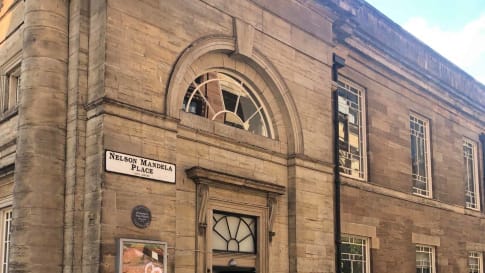
Glasgow; Nelson Mandela Place
How Glasgow stood with the South African Leader Against Apartheid as part of learning about Scotland before joining a small group tour for senior couples and mature solo travellers.
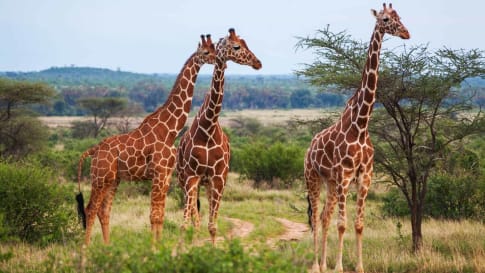
Small group tour of a game reserve.
A small group escorted tour of Southern Africa will send visitors away from a safari with wonderful photographs and amazing experiences of wildlife, birds and truly magnificent scenery as the backdrop for stories on any of the South Africa modern "5" to see on a small group journey into the wildlife reserve.
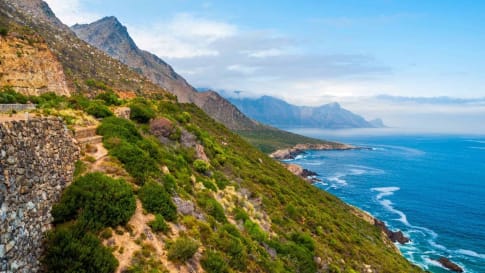
South Africa's garden route.
The Garden Route leaves the rich farmland and passes through the Karoo National Park which is a wildlife reserve of semi-desert area covering 750 square kilometres. Bushbuck and Blue Duikers are common in the forested areas, and Common Eland can be seen on the slopes up from the road.
